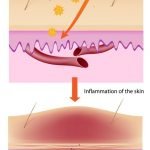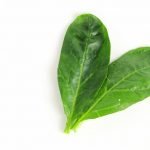Intranasal Oxytocin for Children with Autism
A recent study looked at using oxytocin to improve social abilities in children with autism.1 Autism is marked by difficulty adapting to social situations, reading social cues such as facial expressions, eye contact, and body gestures, as well as a marked difficulty engaging in social relationships, often resulting in extreme anxiety and discomfort. Oxytocin, a hormone released from the posterior pituitary gland, and instrumental in relaxing the uterus during childbirth, is also well known as a principle neurohormonal modulator of various types of social bonding – most well known is maternal-infant bonding; oxytocin is well-documented to be secreted during breastfeeding. Over the past decade, oxytocin has been gaining traction as a possible contributing factor in autism.2
Intranasal Oxytocin Spray
Previous research by this same team has found that oxytocin levels vary greatly in children, regardless of whether they have autism.3 They also found that oxytocin levels are associated with social impairment, also, independent of autism status. They reasoned, that this could help explain why research on oxytocin in autism has largely shown mixed results; that baseline oxytocin levels are not being taken into account. The current study, though very small – only 32 participants – did show a correlation between baseline oxytocin levels and response to intranasal oxytocin spray. Those children with lower baseline levels, responded better to treatment. There were no adverse effects reported.
An Interesting Finding of the Study…
A more interesting finding of the study was seen in the response within the placebo group. Those children within the placebo group, showed slight improvement, and an actual rise in natural oxytocin levels. This hints at a possible mechanism for the placebo response seen in many randomly controlled trials, especially when psycho-social factors may contribute to the success of treatment.
Larger Study Underway
A larger study on oxytocin in autism is currently underway. Hopefully these factors will be elucidated further. For now, the researchers are hesitant to recommend oxytocin as a treatment for autism, but it is looking like testing baseline levels may be an appropriate first step for those interested in pursuing this line of therapy. It is also likely that oral, sublingual, and intranasal administration routes will not give the same results.
Sources
- Parker KJ, Oztan O, Libove RA, et al. Intranasal oxytocin treatment for social deficits and biomarkers of response in children with autism. Proc Natl Acad Sci USA. 2017
- Jacob S, Brune CW, Carter CS, Leventhal BL, Lord C, Cook EH. Association of the oxytocin receptor gene (OXTR) in Caucasian children and adolescents with autism. Neurosci Lett. 2007;417(1):6-9.
- Parker KJ, Garner JP, Libove RA, et al. Plasma oxytocin concentrations and OXTR polymorphisms predict social impairments in children with and without autism spectrum disorder. Proc Natl Acad Sci USA. 2014;111(33):12258-63.
Image Copyright: <a href=’https://www.123rf.com/profile_bialasiewicz’>bialasiewicz / 123RF Stock Photo</a>
 Node Smith, associate editor for NDNR, is a fifth year naturopathic medical student at NUNM, where he has been instrumental in maintaining a firm connection to the philosophy and heritage of naturopathic medicine among the next generation of docs. He helped found the first multi-generational experiential retreat, which brings elders, alumni, and students together for a weekend camp out where naturopathic medicine and medical philosophy are experienced in nature. Three years ago he helped found the non-profit, Association for Naturopathic ReVitalization (ANR), for which he serves as the board chairman. ANR has a mission to inspire health practitioners to embody the naturopathic principles through experiential education. Node also has a firm belief that the next era of naturopathic medicine will see a resurgence of in-patient facilities which use fasting, earthing, hydrotherapy and homeopathy to bring people back from chronic diseases of modern living; he is involved in numerous conversations and projects to bring about this vision.
Node Smith, associate editor for NDNR, is a fifth year naturopathic medical student at NUNM, where he has been instrumental in maintaining a firm connection to the philosophy and heritage of naturopathic medicine among the next generation of docs. He helped found the first multi-generational experiential retreat, which brings elders, alumni, and students together for a weekend camp out where naturopathic medicine and medical philosophy are experienced in nature. Three years ago he helped found the non-profit, Association for Naturopathic ReVitalization (ANR), for which he serves as the board chairman. ANR has a mission to inspire health practitioners to embody the naturopathic principles through experiential education. Node also has a firm belief that the next era of naturopathic medicine will see a resurgence of in-patient facilities which use fasting, earthing, hydrotherapy and homeopathy to bring people back from chronic diseases of modern living; he is involved in numerous conversations and projects to bring about this vision.









